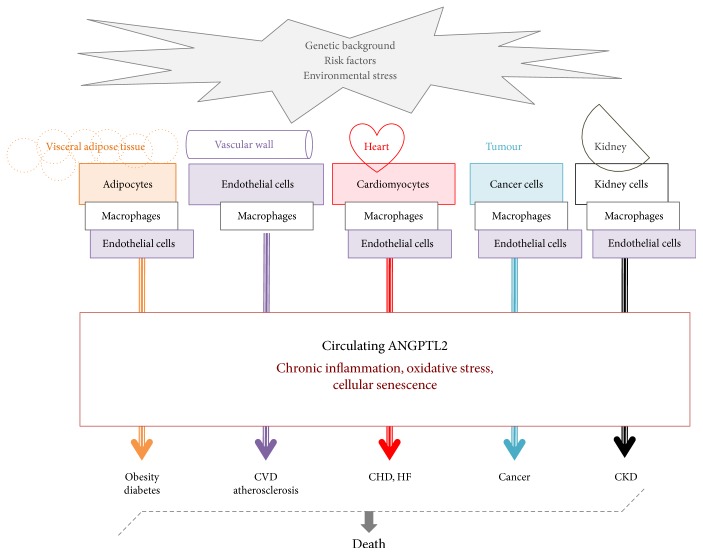Figure 1.
Hypothetic schematic representation of the pathological origins and effects of high circulating ANGPTL2 levels. ANGPTL2 derived from activated adipocytes, macrophages, endothelial cells, cardiomyocytes, cancer cells, or kidney cells increase circulating ANGPTL2 levels. Through its autocrine and paracrine proinflammatory and prooxidative properties, ANGPTL2 contributes to maintain a chronic low-grade systemic inflammation and induces cellular senescence, favouring the pathogenesis of various diseases, leading ultimately to death. It is likely that ANGPTL2 derived from different cell types cooperates and synergizes to favour the pathogenesis of one chronic disease, but one cell type may also be predominantly implicated. CHD: coronary heart disease; CKD: chronic kidney disease; CVD: cardiovascular disease; HF: heart failure.

